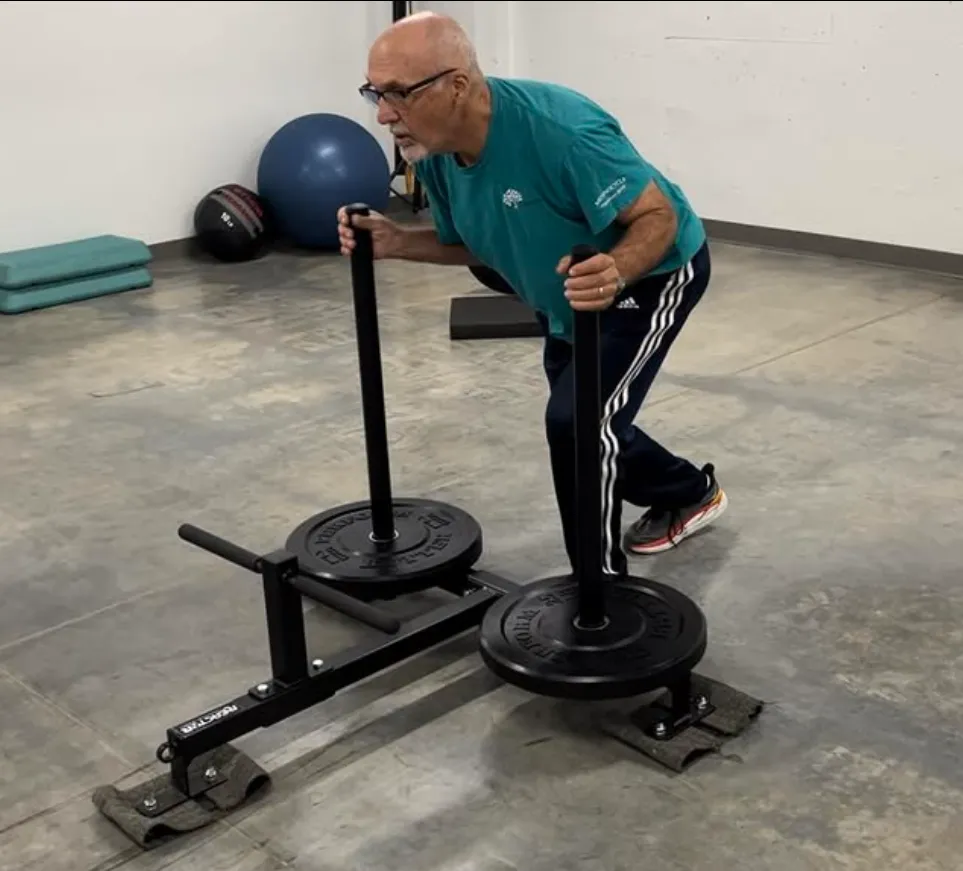
Understanding the Role of Bone Density in Fall Risk

Understanding the Role of Bone Density in Fall Risk
As we age, our bodies naturally go through a variety of changes—one of the most important (yet often overlooked) is the loss of bone density. Think of your bones as the foundation of a building. Over time, if that foundation begins to weaken, even small stressors can lead to cracks or collapses. Similarly, when bones lose density, the risk of injury from even minor falls increases dramatically.
Understanding the connection between bone health and fall risk is key to staying mobile, independent, and injury-free later in life.
What Is Bone Density and Why Does It Matter?
Bone density refers to the amount of mineral content (like calcium and phosphorus) packed into your bones. Higher density means stronger, more resilient bones. As we age, this density naturally declines—especially after the age of 50. In some cases, it leads to osteopenia (mild bone loss) or osteoporosis, a condition where bones become porous and fragile.
This loss in density makes bones more susceptible to fractures. In older adults, a simple fall can lead to a broken hip or wrist—injuries that often have long-lasting impacts on mobility, independence, and even life expectancy.
The Connection Between Bone Density and Fall Risk
Falls are one of the leading causes of injury-related death in older adults. And while preventing the fall itself is important, the severity of the injury often depends on the condition of the bones when that fall happens. Someone with strong, dense bones might walk away with a bruise, while someone with osteoporosis might suffer a fracture that requires surgery and long recovery.
So, improving bone health is not just about avoiding brittle bones—it’s also about reducing the consequences when falls do happen.
If you want to learn more about fall risk, it's many factors, and how to reduce yours, check out this podcast episode I recorded on it and don't forget to subscribe on YouTube to get notified when new episodes are released!
How to Support Bone Density As You Age
The good news is that bone health is modifiable—meaning there are real, effective steps you can take to protect and even rebuild bone density.
1. Live an Active Lifestyle
Weight-bearing activities like walking, hiking, dancing, or even playing pickleball help strengthen bones by making them work against gravity. Regular movement also helps with balance and coordination, two key elements in fall prevention.
2. Incorporate Resistance Training
Lifting weights or using resistance bands helps stimulate bone growth. According to Wolff’s Law, bones adapt to the loads placed on them—meaning if you challenge your muscles, your bones will respond by becoming denser and stronger.
3. Add Plyometrics (as Appropriate)
Low-impact power exercises, such as gentle hops or step-ups, can enhance both muscle strength and bone stimulation. These are best done under supervision or as part of a structured fitness program.
4. Support Your Nutrition
Bone-strengthening nutrients include:
Calcium: Found in dairy, leafy greens, and fortified foods.
Vitamin D: Supports calcium absorption and bone remodeling.
Protein: Essential for muscle and bone repair.
Magnesium and Vitamin K: Also play supporting roles in bone metabolism.
Takeaway: Strong Bones, Fewer Falls, Better Living
Bone density isn't just a medical concern—it's a quality-of-life issue. Maintaining strong bones supports everything from your ability to walk independently to your confidence in daily movement.
By staying active, incorporating strength training, and supporting your nutrition, you can significantly reduce your fall risk and keep your bones—and life—on solid ground.
